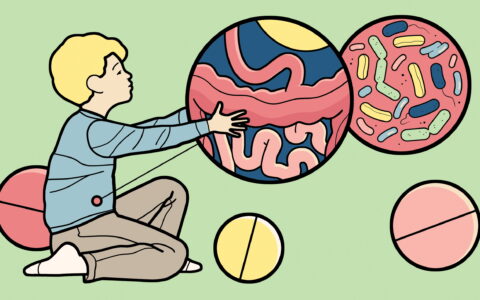As the unrelenting influx of fentanyl and other illicit drugs continues across the nation, substance use disorder (SUD) is sweeping up increasing numbers of pregnant women – with an impact that is doubly tragic, placing an adult life and a fetus’ healthy development on the line.
Neonatologist Stephen Patrick, M.D, M.P.H., began investigating the nature and extent of the barriers to care for pregnant women years ago, squaring off with the SUD behemoth and consulting with federal policymakers on holistic mitigation strategies.
“Some of the problem may relate to stigma, but it is likely that pregnant women with SUD fall between the specialty cracks, with obstetricians and addiction-medicine physicians untrained and uncomfortable treating a patient with both pregnancy and SUD.”
Patrick led a 2020 study that used secret shoppers posing as women with SUD, some “pregnant” and some “not pregnant.” The women called to request treatment-related appointments from physician practices where methadone or buprenorphine are prescribed, across 10 states. All the actors related that they had either private insurance or Medicaid.
Then, in 2023, a follow-up analysis looked at state-by-state cash payment requirements for treatment.
The researchers found stark differences between states, as well as an alarming and disproportionate percentage of additional obstacles to care, including unreachable offices, appointment rejections and cash-only requirements.
“For pregnant women, as with all people with SUD, we should be treating addiction like a chronic, relapsing medical condition, the way we treat someone with diabetes who is trying to get treatment with insulin,” Patrick said.
Opioids for Treatment
The preferred treatments for opioid-related SUD, buprenorphine and methadone, can be given in steady and controllable volumes, avoiding the highs and lows of intoxication and withdrawal, Patrick explained.
“This makes it much more likely that the pregnancy will go to term and that the mother is not going to overdose,” he said. “Plus, being in treatment gives us the counseling opportunity to help the expectant mother into recovery.”
Pregnant Women Last
Patrick’s work, cited in a White House Office of National Drug Control Policy white paper, shows just how discouraging it can be to access specialized care and counseling for SUD.
“You look at these studies together, and the collective thread is that it is hard to get into treatment.”
Callers posing as pregnant women were nearly 17 percent less likely than non-pregnant women to be granted an appointment with a buprenorphine provider. In some states, over 50 percent of pregnant callers could not get through to the provider or their requests for appointments were rejected – with buprenorphine providers much less likely to grant appointments than methadone providers.
“Some of the problem may relate to stigma, but it is likely that pregnant women with SUD fall between the specialty cracks, with obstetricians and addiction-medicine physicians untrained and uncomfortable treating a patient with both pregnancy and SUD,” Patrick said.
“So, in the middle of the crack are untreated patients who are more likely to die and more likely to have adverse pregnancy outcomes.”
Cash-Only
Requiring cash-only payment was found to be high overall, with 26.1 percent of buprenorphine-waivered prescribers and 32.5 percent of opioid treatment programs granting appointments only after callers agreed to pay cash. This requirement did not hinge on whether the woman had insurance, nor on provider density or the prominence of their insurance company in their state or region. Rural practices were less likely to demand cash for services.
Average fees for buprenorphine providers were markedly higher, at $250, compared with $34 for the methadone prescribers.
“You look at these studies together, and the collective thread is that it is hard to get into treatment,” Patrick said.
“Five or 10 years ago, the story we often heard from patients is that their addiction began with prescription opioids,” he said. “Today, we see fentanyl as the dominant opioid, and now often mixed with stimulants like methamphetamines or the sedative xylazine, which is associated with the development of deep wounds and death. So, the stakes are only rising, and time is running out for so many pregnant women.”
In this race against the clock, Patrick directs Firefly, a treatment program for pregnant women with opioid use disorder that combines medical treatment with therapy.
“We know that pregnancy is a time where people are seeking out treatment. Sometimes it’s just being present to be able to help them,” he said.
Work at the Intersection
Patrick worked as a senior policy advisor at the White House, where he led the first action plan on SUD in pregnancy to improve access to treatment, reduce unnecessary foster placement, and fuel innovation through public-private partnerships.
Recently, he has focused on how to holistically support these families after they leave the hospital.
“Infants are the fastest growing group in the child welfare system in the United States today. Most of that is due to parental substance use,” Patrick said. “And so, there are a ton of challenges that you see at that intersection of all the families and entities involved.”
“As a country, there’s not a silver bullet for this but there is silver buckshot, and it’s going to take all we have to address both the drug supply, but also the treatment gaps.”





